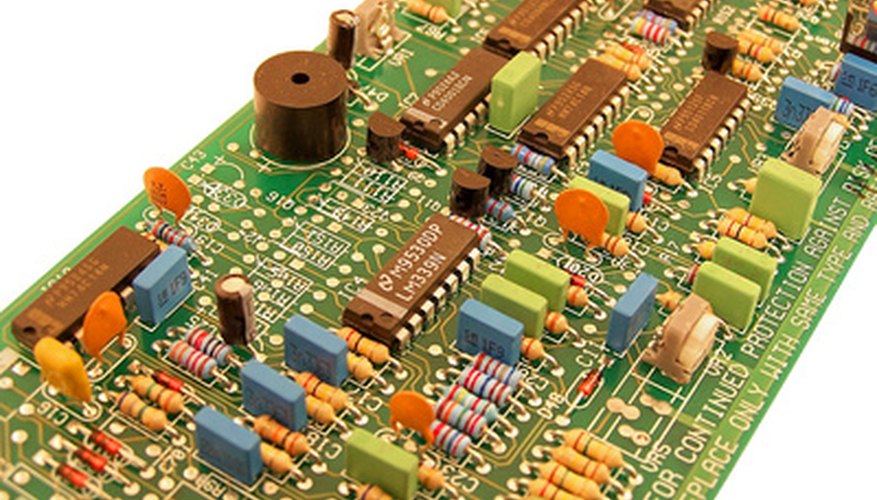Circuit Boards are the core electronic wiring for most modern electronics, and to fry the circuit board means to severely damage your device. Circuit boards are composed of a fibreglass board woven with copper wire or other conductive materials. Some modern circuit boards, known as Printed Circuit Boards, or PCBs, are copper-laminated fibreglass, which helps to limit the use of the environmentally-harmful copper. There are various ways to fry your circuit board, and this article will cover the most common ways that circuit board damage occurs.
Find the voltage level of circuit board you wish to fry. The power requirements will be labelled on the appliance's manual or directly the device.
Check to make sure the polarity of the wiring is not reversed. For most electronics, a red wire indicates a positive charge and a black wire is negative, but check the manual to confirm this. If the polarity is reversed, the circuit board's replaceable fuse may shield the circuit board from damage when you overload the voltage.
- Circuit Boards are the core electronic wiring for most modern electronics, and to fry the circuit board means to severely damage your device.
- If the polarity is reversed, the circuit board's replaceable fuse may shield the circuit board from damage when you overload the voltage.
Put a higher than manufacturer recommended voltage flow into your device. For example, if your appliance accepts 12 Volts, put in 24 Volts. This can be done with a household transformer. If you hear crackling or see smoke coming from your circuit board, it is likely fried.
- Put a higher than manufacturer recommended voltage flow into your device.
- This can be done with a household transformer.
Reverse your batteries' polarity. The appliance should have a label showing the correct way to install the batteries and reversing the recommended battery directions will reverse the polarity and increase the voltage flow to the device.
Turn on your unit. This may fry the circuit board or blow the fuse. If the circuit board is not fried, move on to Step 3.
Leave the batteries in your device until the battery chemicals corrode. The battery corrosion will eventually arrive at the battery contacts and cause the wiring contacts to corrode, which will fry your circuit board.
Submerge your appliance in water, taking caution you are not in danger of being electrocuted. "Splashproof" devices will not allow water to leak into the wire housing when splashed, so you must submerge them to fry the circuitry.
- Leave the batteries in your device until the battery chemicals corrode.
- Splashproof" devices will not allow water to leak into the wire housing when splashed, so you must submerge them to fry the circuitry.
Keep your appliance in a wet area for an extended period time. Although "waterproof" units can be placed completely underwater to a specified depth without frying the circuits, an environment with consistent exposure to the elements will eventually ruin the circuitry.
Turn on your wet appliance using electrical safety gloves. The water will cause the appliance to short out.
WARNING
Frying your circuity means ruining your appliance. Do not follow these instructions unless you wish to cause damage to your device that may ruin it permanently or require a costly replacement. Take extreme precaution not to be electrocuted when submerging your appliance in water or changing the wiring.
